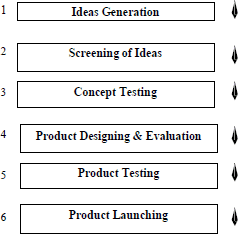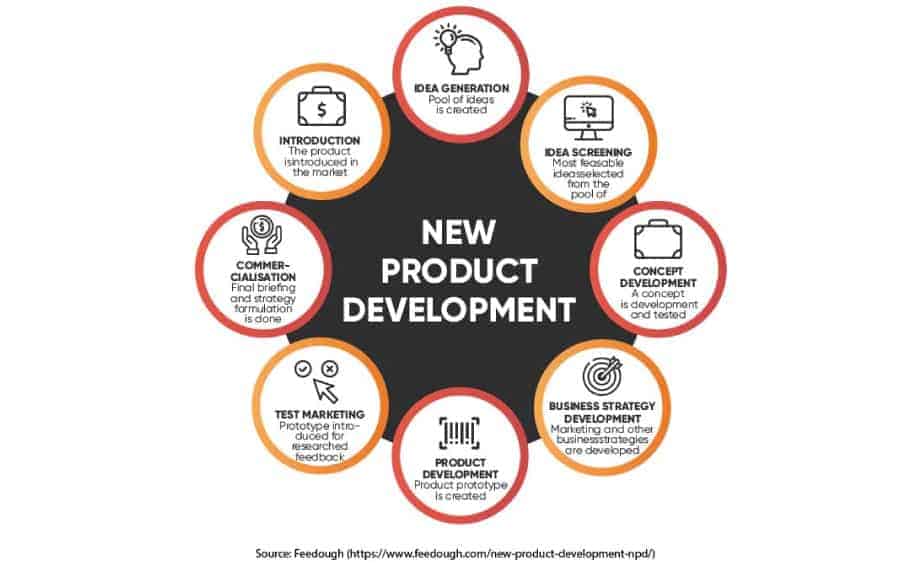As you must have realized by now, it is crucial to have a strategy for developing new products. Many products fail, and to keep expanding company sales, we must have new products.
Some products of Unilever have failed, yet they remain leading manufacturers because they have continuously added to their lines and introduced product lines to their product mix. The figure below gives the stages of new product development.
Read Also: The Role of Middlemen in Marketing

Generation of New Product Ideas
The first step is to get ideas about possible new products. Can you think of the sources from which you can get such product ideas? Your answer should have been: Customers, Company Salesmen, Competitors, Company Executives, and Employees within the organization with technical people.
As marketing is towards satisfaction of consumer needs, an alert marketer can get some ideas from the customers for possible new products by keeping eyes and ears open and particularly the mind to perceive even needs which are so far unexpressed.
Read Also: Functions and Types of Retailers in the Marketing of Goods
For example, in the case of refrigerators, someone conceived the idea of having a ‘two-door’ refrigerator; another conceived the notion of the ball-point pen that obviated the need for constantly filling fountain pens. Thus, new ideas can come from customer needs or problems requiring a solution.
Company salesmen are in an excellent position to help. It is because they are in constant touch with the market, that is, both consumers and competitors. Watching competitors and what they introduce can also be palatable for new ideas.
The intriguing method here is what is known as brainstorming. Several people say that the organization’s executives are called together and asked a question about new ideas or ideas for new products.
They are asked to mention it without evaluation. Answers are recorded on a tape recorder so that the flow is not interrupted.
It is known as the ’evaluation’ or ‘screening’ of ideas stage in this process. Futile notions are removed because the unnecessary cost has to be incurred to process them further.
The ideas must be consistent with the company’s philosophy, objectives, and strategies in terms of the resources available in the organization.
Notions are evaluated in terms of:
- Possible profitability
- Good market potential (market size)
- Availability of production facility
- Availability of raw materials for such a product, if selected
- Availability of finance
- Availability of managerial ability
- The uniqueness of the product.
Read Also: The Product Life Cycle Concept and Marketing Mix at Different Stages
